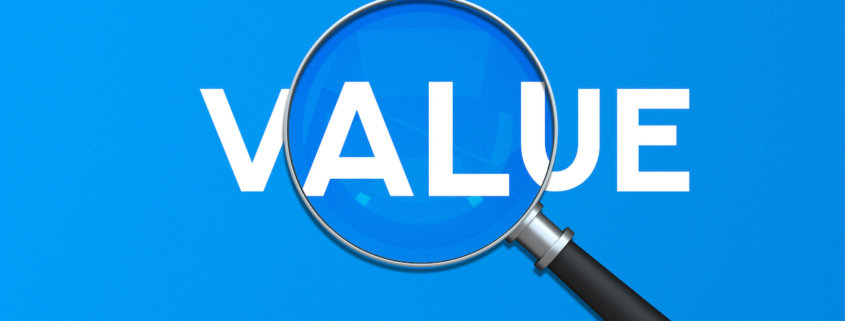Marketing to Baby Boomers: Develop a Strong Value Proposition
When it comes to marketing to baby boomers, you must have a strong value proposition. OK, so what the heck is a value proposition anyway—and how do you create one? Keep reading.
What is a value proposition?
Oh, marketing! You got to love the jargon, right? Sometimes referred to as a unique selling proposition (or USP), a value proposition shows what’s in it for the prospect and why the prospect should choose you instead of your competitors. Because at the end of the day, that’s what prospects care about: How does your product or service benefit them?
Your value prop shouldn’t be confused with a company mission statement. A mission statement is about your company’s goals and vision. A value proposition is focused on the prospect’s needs and pain points and how you address those pain points. It’s a true proposition—in essence, a proposal—about why the prospect should choose you. An effective value prop will get into the benefits you offer and how you’re different from your competitors.
Is a value proposition a written statement?
An effective value proposition is usually a short paragraph rather than one simple sentence. You need more space than a single sentence since a value prop gets into what’s in it for the customer, which includes their needs/pain points and how you solve for those better than your competitors.
How is a value proposition used?
Your senior living website home page is the best place for your value proposition since that’s your most trafficked website page and it sets the tone for what website visitors can expect. You might have your value prop “blurb” in the header area or just below it, depending on the headline.
But that doesn’t mean you can’t have the value prop—or a version of it—appear on other pages. In fact, your value proposition will influence the messaging you use in all of your marketing materials, from your internal website pages to advertising to everything in between.
What makes for a good value proposition?
Here’s what to aim for when developing your value proposition.
- Be specific. Your value proposition should be incredibly specific about the benefits your prospects and customers receive compared to what your competitors offer. There’s no room for vagueness or generalizations. Be clear and direct. Avoid jargon.
- Be accurate. This is not the place to be aspirational. Don’t tout anything that’s not true today.
- Be authentic. Accuracy and authenticity are two sides of the same coin—they go hand in hand. Accuracy is about being truthful. Authenticity is about being genuine in your tone and how you present your value proposition. It should reflect your overall senior living brand identity.
An important caveat: Your value proposition won’t be all things to all people. Why? Because your senior living community isn’t for everyone. In some cases, your competitors might very well be the better option, and that’s OK.
Why are value propositions so important?
An effective value prop does the heavy lifting for you. It can help people self-identify whether your community sounds like the right fit for them—or not. The ones who aren’t the right fit can go elsewhere. The ones who are the right fit can continue their journey with you, downloading content and requesting tours. Ultimately, these “best fit” folks will be easier to convert into move-ins.
Why do value propositions matter so much when marketing to baby boomers?
Boomers are tech-savvy. The youngest Boomers are in their late fifties. The oldest are in their mid-70s. These folks do online research. They will visit your website. They will read online reviews. And they will look for a community that can serve their specific needs. Once you’re on their “pass” list, you might never get back on their “consideration” list. The better you are at clearly conveying the key benefit to your ideal boomer prospect, the easier it will be to keep the conversation moving forward.
How do I write a value proposition?
There’s no shortage of ways to go about it—and every marketing site has its own take and approach. Try not to overthink it too much. Instead, pretend you have one shot to communicate why someone should choose your senior living community instead of another community. What would you say?
- Work with your team on brainstorming answers to that “why.” Dig deep. All senior living communities are selling the same thing, more or less, so you have to go beyond the basics and figure out what makes your community special.
- Interview your happiest residents. Ask them what they would write if they had one shot to convince someone to move into your community.
- Read your reviews—the good ones and the bad ones. Create a spreadsheet with words/phrases that people keep using.
- Audit competitors. Not just physical competitors in the area, but also competitors you compete with online. (They’re not always the same.) How are they positioning themselves? What’s their value proposition?
Once you do this work, you’ll want to identify the focus of your value proposition, meaning the number one reason why someone should move into your community rather than a competitor’s.
Take a step back. Challenge your own assumptions. Allow yourself to be persuaded by the evidence. For example, maybe you originally were thinking the community’s modern accommodations were the key selling point, but all the reviewers and residents keep talking about the warm staff that feels like family.
After you’ve identified the number one reason why someone should move into your community, you need to write the “blurb,” as we affectionately call it, which will include:
- A compelling headline that clearly communicates the key benefit you’re delivering to your ideal prospect
- A short paragraph that continues to make your case by building off the headline (you only have a few lines)
Draft several versions. Ideally, work with a copywriter. Writing short persuasive copy isn’t as easy as it sounds. In fact, sometimes writing short copy is harder than writing longer missives. So it’s a worthwhile investment to work with a writer. If you need some inspiration, WordStream has a great article with seven examples of compelling value propositions.
Once you have a few versions, you’ll want to discuss it internally with marketing and sales (and possibly the C-suite if they want to provide input). You might want to get feedback from some of the happy residents you talked to—simply ask which version captures how they would position your community. You can (and should) test your value props to see what resonates.
Can Senior Living SMART help me develop a winning value proposition?
You bet! We have a stable of talented copywriters and marketing strategists who can work with your team in uncovering the key differentiator you offer. From there, we can craft an engaging value proposition for your home page and use it to guide your overall messaging.
Get in touch and let’s discuss what makes your community special.





